Now we’ve been to the Ford Focus RS launch, driven the car for ourselves, given it a five-star rating and met the incredible team who build it, we thought it was high time we got our geek on. Here are some serious facts about the RS you won’t find in the brochure…
 It’s basically a stealth fighter jet
It’s basically a stealth fighter jet
The innovative four-wheel drive system underpinning the RS has been developed with GKN Driveline, based in the UK and amazingly it’s set up to always make the rear of the Focus want to overtake the front. Pardon me? So, during hour after hour of calibration, Ford’s boffins realised that driving the rear wheels faster than the fronts (by around two per cent) actually gave them the handling feel and agility they wanted, a bit like the inherent instability built into a Stealth Fighter jet, which would spiral out of control without its electronic brain.
But, there was a problem. The fact the front and rear axles are in a perpetual war blew the prototype system borrowed from an Evoque in just a few days, so the production four-wheel drive has been completely reengineered to be incredibly robust to put up with the stresses. Other party tricks include being able to send 100 per cent of available torque to either rear wheel in 0.06 seconds and constant monitoring of vehicle parameters at 100Hz (100 times per second).
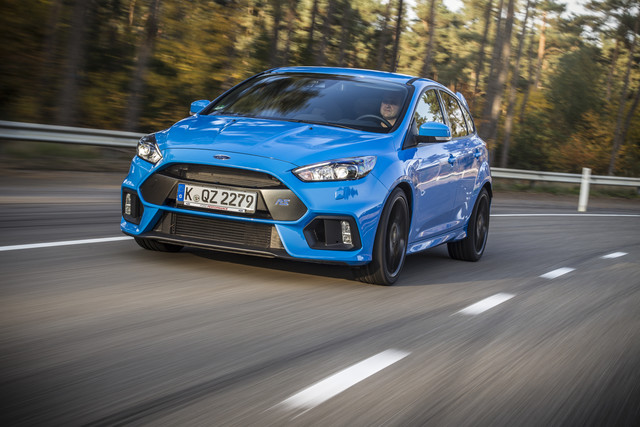 Overboost plus overboost equals big speeds
Overboost plus overboost equals big speeds
Now, we all know the 2.3-litre turbocharged petrol engine pumps out 345bhp and 440Nm of torque, and that if you go full throttle there’s an ‘overboost’ function which delivers 470Nm of torque for 15 seconds. But did you know, that if you lift off and put your foot back down as fast as you can, you actually get the full 470Nm again for another 15 seconds? And in theory, you can do this as many times as you want.
So, we’re not sure where in the world this would actually be possible, apart perhaps from the German Autobahn, but it’s still pretty cool.
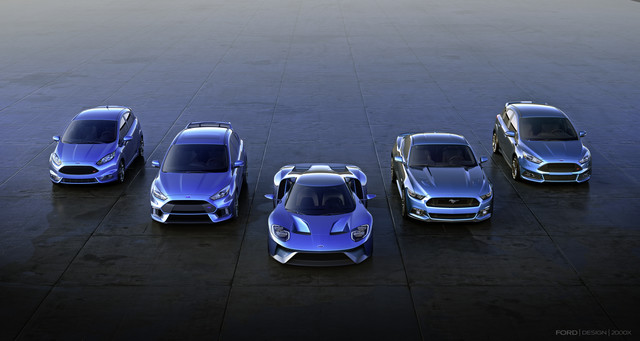 Ford class the Focus RS as a ‘HP1’ vehicle
Ford class the Focus RS as a ‘HP1’ vehicle
Everyone loves a good list, so it makes sense that Ford categorises their vehicles based on certain attributes. So, when Ford Performance plan out a car, they have three tiers of performance. First up, there’s your ‘HP2’ cars, including the Ford Focus ST and Mustang. They are quick, of course, but they are also comfortable and give up some performance for luxury and daily convenience.
Then there’s a ‘HP1’ designation for hardcore models like the Focus RS and Mustang GT350R. These are aimed squarely at serious drivers, who are willing to sacrifice some comfort for speed and want the latest in performance technology and innovation.
Beyond this, there’s ‘Elite’. Few of us will ever get to drive one of these, and the only ‘Elite’ model planned currently is the Ford GT supercar, which will represent the pinnacle of Ford’s engineering and even take it racing against the likes of Ferrari and Porsche with a competition version.
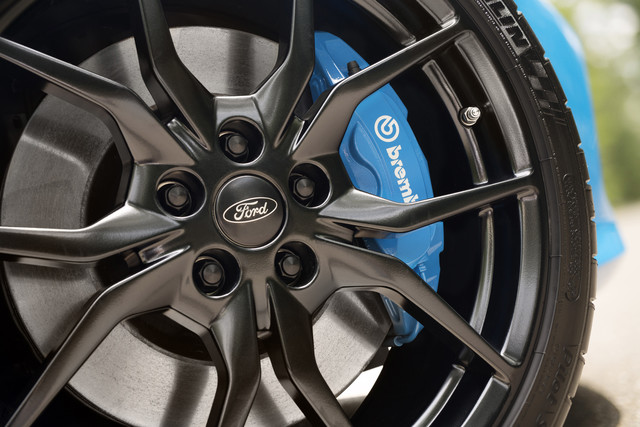 After 30 minutes: “box, box, box”
After 30 minutes: “box, box, box”
Part of Ford’s ‘HP1’ designation for the RS also dictates that it has to be able to spend 30 minutes pounding around a racing track without any reduction in the capability of its brakes or engine. Now, any of you who have taken a car on a track day will know that’s no mean feat, even for a hot hatch or performance car, many of which turn into a smoking, groaning mess when shown a circuit.
To accomplish it, Ford has teamed up with Brembo to supply 350mm front brakes with lightweight four-piston monoblock callipers, which are significantly larger than the 336mm discs found in the Mk2.
But, that’s only part of the story. Brake cooling is provided by ducts leading from the front bumper, underbody twin “jet tunnels” and even specially shaped lower suspension arms which direct the air. If that wasn’t enough, the discs themselves have aerodynamically optimised fins to help expel heat.
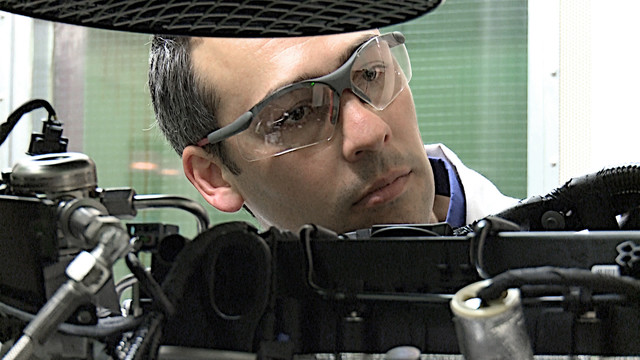 Someone in Valencia has listened to your engine
Someone in Valencia has listened to your engine
If you buy a Focus RS, a highly-trained expert at the Ford manufacturing plant in Valenica, Spain will listen to your engine before it’s sent to you. Like taste testers sipping wine or sampling fine cheese, these aural experts use 18 sound-proofed cells at the end of the production line to listen to each engine for one minute at a time.
Any rattles, whistles or groans incommensurate to the throaty roar of the RS will see the engine fail its singing audition and be sent away for further examination. And, if you think that sounds like a slightly tortuous job, don’t worry, the experts do get to prepare the engines between listening sessions.
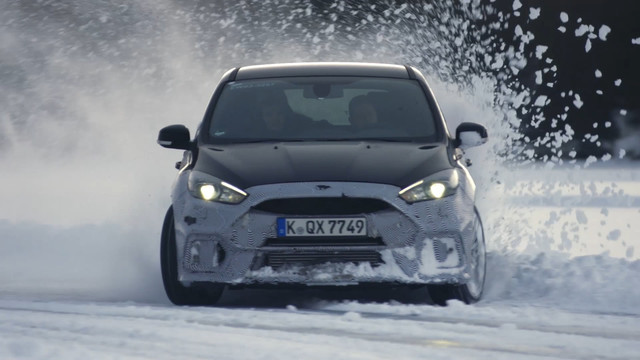 The RS is actually too efficient
The RS is actually too efficient
According to Tyrone Johnson, the Vehicle Engineering Manager at Ford Performance, certain fundamentals of the car’s design had to be signed off right from the beginning, and because the team wanted as much cool air to reach the engine as possible, it created a front grille with a huge opening (85 per cent versus the Focus ST’s 56 per cent).
The team also designed the biggest intercooler possible in the space where it could fit, but on testing the car realised the combination of all this fresh air, and a huge intercooler, meant it was actually too efficient and was causing water condensation, which is bad news for the engine. As a result a suitable blanking plate had to be sourced (the team decided on one from a diesel Transit van) to cover part of the intercooler, bringing the temperature back up within safe limits.
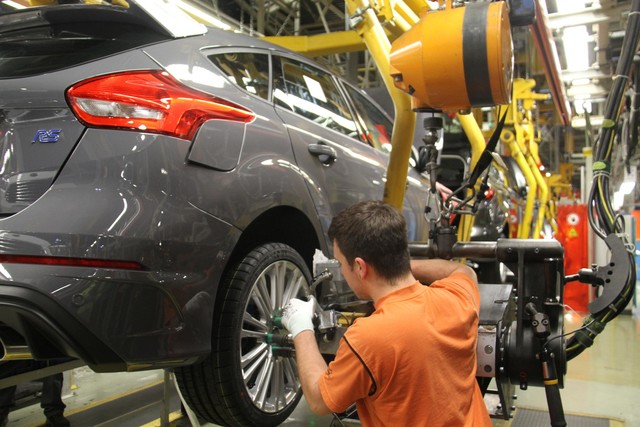 The car in front is a 1.0-litre
The car in front is a 1.0-litre
To make the Focus RS affordable, it had to be be built along the same production line as every other Focus. So that means, stand next to the line and you could easily see a 1.0-litre Focus come along, followed by a 2.0-litre diesel and then a Focus RS.
This is despite the fact special reinforcements need to be added to the bodyshell, which make the RS 23 per cent stiffer than a standard car, with a 200 per cent stiffer rear subframe.
Previous versions of the RS had to be removed from the line and finished by hand, but this limited output and increased its cost. With the latest model being a truly global car, going on sale in 42 countries, including North America and China, it will be built in far greater numbers than ever before, so any holdups were out of the question.
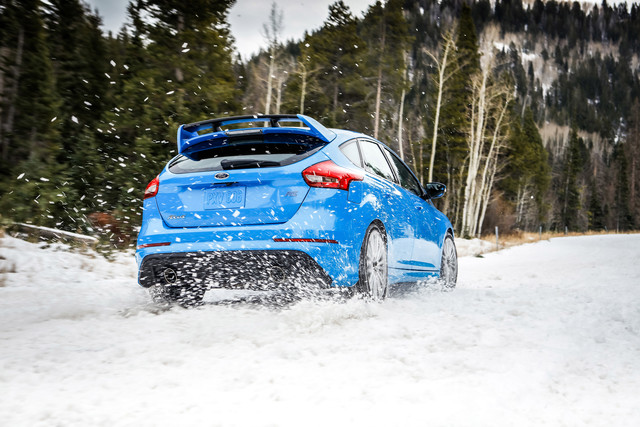 You don’t need to redline it
You don’t need to redline it
Because of the stonking turbocharged mid-range punch of the 2.3-litre engine, holding each gear until its 6,800rpm redline isn’t actually the fastest way to accelerate. In fact, if you want to get the best possible acceleration from the RS, you need to remember the digits 5,900, because Ford says this is the optimum upshift point.
To give you a hand, Ford has included a ‘Performance Shift Light’ in the dashboard, which alerts you as you approach “five-niner” (as we like to say down at the strip) and then flashes if you hit the limit at 6,800rpm, in which case we’d say you’d “six-eighted the engine again”….probably.



